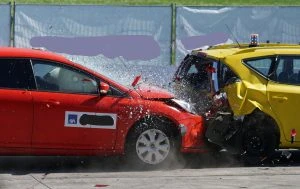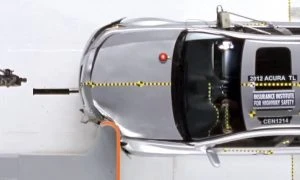ANCAP Updates

There have been recent changes to the tests at the Australasian New Car Assessment Program (ANCAP). The new vehicles making their way to our showroom floors are more complicated and go beyond merely being a tool for getting you from one point on the map to another. There are many technologies that we are familiar with now that weren’t available on many cars even a couple of decades ago. Most of us will know what a seatbelt is, and what ABS and ESC do, and that our cars have airbags. Seatbelts have been common in cars since the seventies, while the other two features have been common since the early 2000s. Even as far back as the nineties, you’d slip yourself into a Saab 9000, any BMW, or Honda Legend and there would be a logo on a dash panel or steering wheel saying that behind this was an airbag at the ready. Anti-lock braking technology, commonly known anti-brake skid (ABS), continued to become more sophisticated and reliable throughout the 1980s. By the early 1990s, ABS was a standard feature in many new vehicles and was considered pretty cool and a lifesaver in the wet. Electronic stability control (ESC) was also a pretty big game-changer in terms of the way a vehicle could be kept in line and pointing in the right direction when any hint of wheel skid was detected. ESC and ABS were linked into the same system.
Today, ESC and ABS have all sorts of extra electronic wizardry around them that can tell these features to engage into action quickly. You think of all the camera technology, and laser and sonar technology that can detect how far the back end of a bus is away from the nose of your vehicle, which just happens to be catapulting towards the bus far too fast. These onboard systems have been designed to detect the situation and engage the braking systems (ABS and ESC) in a timely fashion in order to stop an accident from occurring. This wizardry is now looking out for other road users’ safety as well as your own as you guide the vehicle from the driver’s seat. New vehicles can now keep themselves inside their own lane, should you happen to become distracted. The systems will even detect an incoming pedestrian that has decided it’s a great idea to drink far too much alcohol at the pub and then stagger home across a busy street without using the traffic light crossing at night. (On a more serious note, this sort of drunken decision can be fatal – when I was in high school, a friend of mine hit a drunk in black clothes who ran in front of her car on a wet night when she was on her P-plates. Witnesses were there to tell the cops that there was no way she could have seen him coming or braked in time, so she didn’t face consequences for manslaughter, but she was traumatized, as you can imagine.)
New levels of safety technology are being incorporated into the newest vehicles we can buy. This has meant that our mates at ANCAP have had to bring in new tests and rating criteria for these vehicles. The latest criteria were updated last year (2023). A maximum of five stars can be given out to a vehicle that has undergone crash testing and other safety tests. Vehicles are required to meet minimum score thresholds for each star rating level, and these rating requirements and testing criteria are updated every 3 years to keep up with all of the new models that seem to be pouring in from all parts of the globe.
A side effect of these updates means that older cars that had a five-star rating when they first entered the market wouldn’t get the same rating now. This is something to be aware of if you are considering buying a second-hand car or an older model.
The 2024 Mitsubishi’s Triton Dual Cab ute was the first Dual Cab ute tested under the latest ANCAP rating criteria. The sixth-generation Triton earned itself a five-star safety rating. Regularly tweaking the changes to the safety rating criteria at ANCAP is important because it keeps pace with all the new safety features and technologies that make their way into new vehicles entering the Australian and New Zealand automotive markets.
